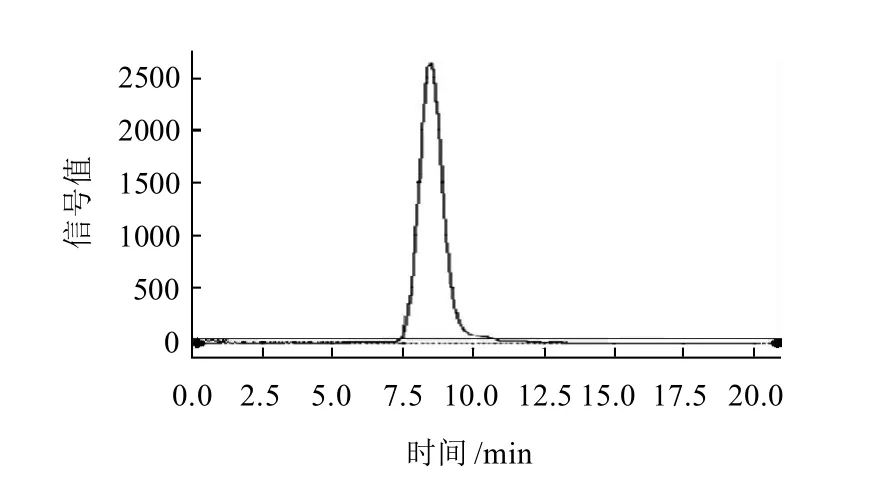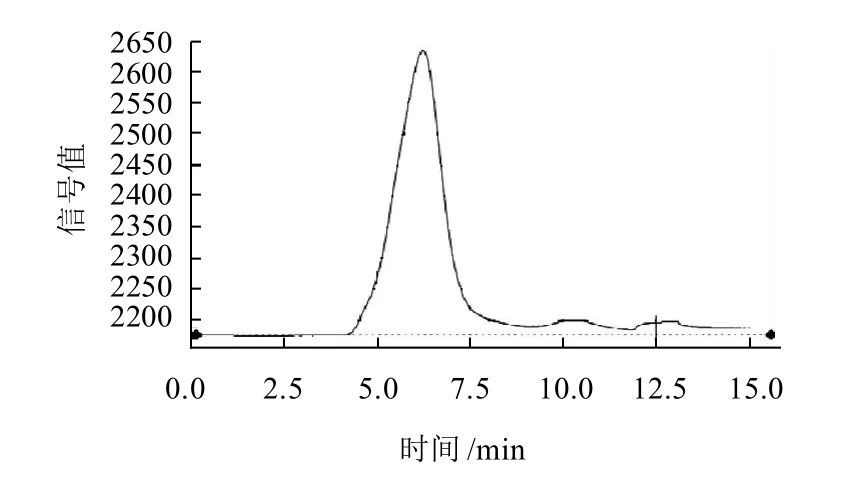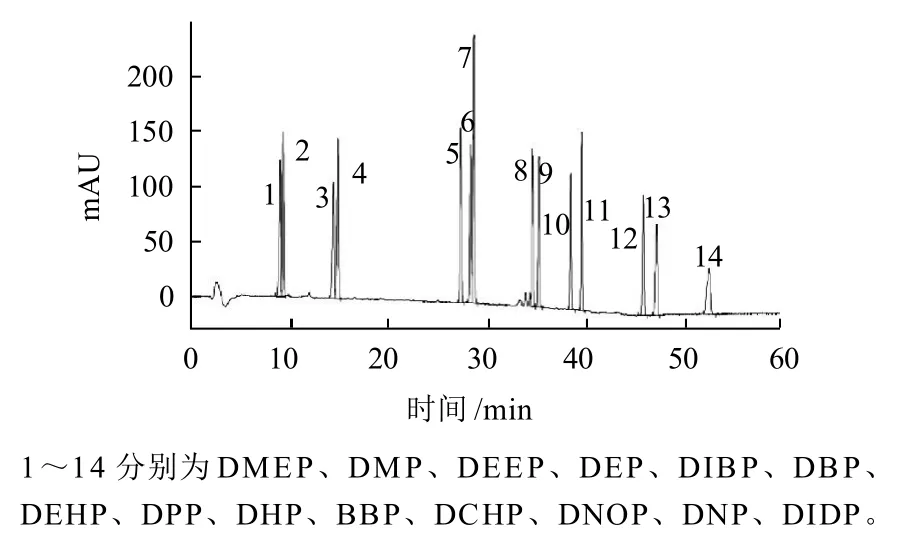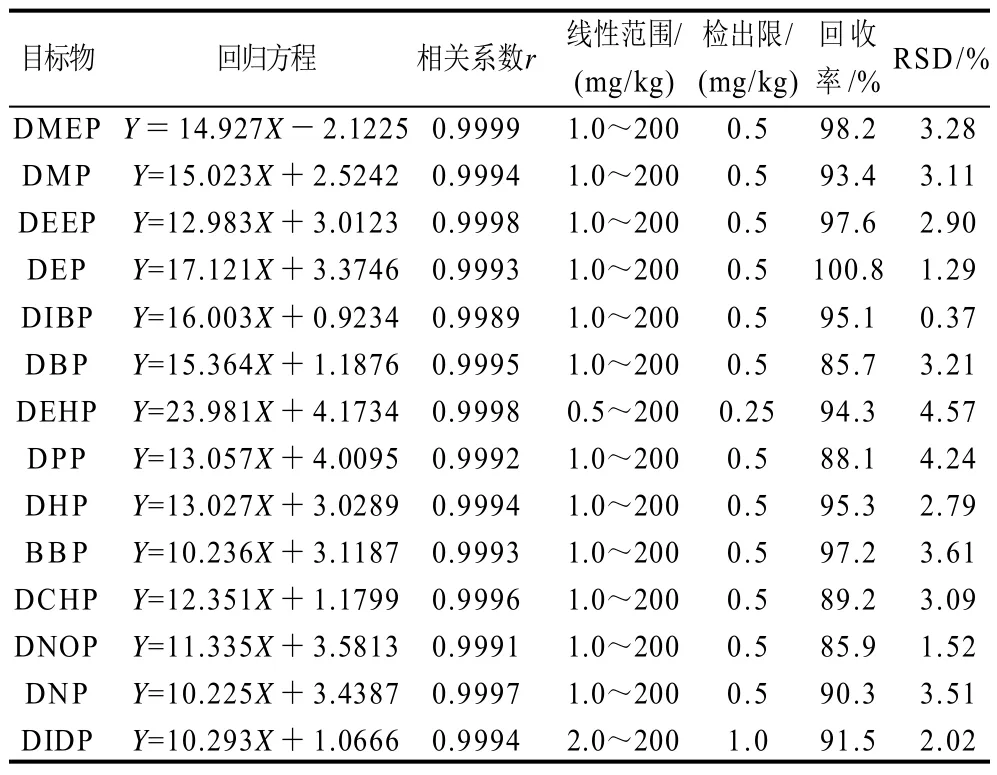张会军,张敬轩,李 挥*,张 岩
(河北省食品质量监督检验研究院,河北省食品安全重点实验室,河北 石家庄 050051)
凝胶渗透色谱-高效液相色谱法对辣椒酱中14种邻苯二甲酸酯的同时检测
张会军,张敬轩,李 挥*,张 岩
(河北省食品质量监督检验研究院,河北省食品安全重点实验室,河北 石家庄 050051)
建立辣椒酱中14种邻苯二甲酸酯类环境激素的高效液相色谱-二极管阵列检测器(HPLC-DAD)检测方法。样品通过石油醚超声提取,GPC净化,氮吹浓缩后,以乙腈-水为流动相,经Warters-C18(250mm×4.6mm,5μm)液相色谱柱分离,进行HPLC-DAD分析。方法线性相关系数r>0.998,检出限为0.25~2.0mg/kg,在10mg/kg添加水平时样品加标回收率为85.7%~100.8%,RSD为0.37%~4.57%。该方法灵敏、快速、高通量,可用于14种邻苯二甲酸酯雌激素的测定。
凝胶净化;高效液相色谱;辣椒酱;邻苯二甲酸酯
邻苯二甲酸酯(phthalate acid esters或phthalate esters,PAEs,又称酞酸酯)作为塑料增塑剂用于增大产品的可塑性和提高产品强度,在医药、化工、化妆品、农药等领域广泛使用,其中在食品包装材料尤其是PVC产品中也大量使用。PAEs与塑料基质之间没有形成化学共价键,而是以氢键和范德华力连接,彼此保持各自独立的化学性质,随着时间的推移,其可由食品包装迁移到食品和饮料中。近几年,人们越来越关注于PAEs对人类和动物不利影响。大量研究证实,PAEs在人体内的残留将严重的影响到人类的生殖系统、免疫系统和神经系统,影响生物体内激素的正常分泌,导致细胞突变,致畸和致癌[1-3],因此,欧盟、日韩等国家先后禁止或限量邻苯二甲酸酯增塑剂在食品接触性和人体接触性材料中使用,其中最显着的法令就是欧盟2005/84/EC[4],我国也将DMP、DBP和DOP三种邻苯二甲酸酯列入“中国环境优先污染物黑名单”[5]。2007年5月瑞士苏黎世对我国出口辣椒酱食品进行查封和退货,因为包装瓶盖内垫中含有的邻苯二甲酸酯(主要是DEHP)污染了内装食品。目前,邻苯二甲酸酯的检测方法主要有气相色谱法[6]、液相色谱法[5,7-9]、气相色谱-质谱法[10-16]和液相色谱-串联质谱法[17]。本实验对市场上辣椒酱进行抽样检测,建立同时测定辣椒酱中14种邻苯二甲酸酯的GPC-HPLC分析方法,旨在为进出口辣椒酱中PAEs监督检测提供技术支持及为其他塑装食品中PAEs的检测提供参考依据。
1 材料与方法
1.1 材料与试剂
辣椒酱 市售。
14种邻苯二甲酸酯类标准品(纯度均大于98%) 德国 Ehrensorfer Quality公司;乙腈(色谱纯);超纯水由Milli2Q Plus超纯水系统制备;其他试剂均为农残级。
标准储备溶液:分别准确称取适量的邻苯二甲酸酯标准品,用甲醇溶解并定容,配制成1g/L标准储备液,置于冰箱中4℃保存备用。
1.2 仪器与设备
1200高效液相色谱(配二极管阵列检测器) 美国Agilent公司;凝胶渗透色谱、凝胶净化柱(700mm×25mm,ID glass column Bio Beads (S-X3)-200~400mesh,70g) 美国J2公司。
1.3 样品前处理
称取0.5g(精确至0.1mg)样品于250mL具塞三角瓶中中,加入20mL石油醚,涡旋混合2min,静置后提取石油醚层,用石油醚反复冲洗残渣3次每次10mL,合并提取液并经10g无水硫酸钠过滤,滤液氮吹浓缩至干,用乙酸乙酯-环己烷(1:1,V/V)定容至10mL,涡旋2min,用0.45μm滤膜过滤,滤液经凝胶净化色谱净化后,收集7.5~10min之间流出液,氮气浓缩至干,用1.0mL甲醇定容,供HPLC分析。
1.4 色谱条件
1.4.1 凝胶渗透色谱条件
凝胶渗透色谱柱:700mm×25mm ID glass column(Bio Beads (S-X3)-200~400mesh,70g);检测波长254nm;流动相:乙酸乙酯-环己烷(1:1,V/V),流量5mL/min,收集7.5~10min馏分于50mL鸡心瓶中。
1.4.2 高效液相色谱条件
色谱柱:Warters-C18(250mm×4.6mm,5μm);流动相:A水,B乙腈,梯度洗脱(表1)检测波长:224nm;进样量:20μL;流速:1mL/min。

表1 流动相梯度洗脱条件Table 1 Gradient elution conditions of mobile phase
2 结果与分析
2.1 提取溶剂的选择
考察不同溶剂(乙醚、石油醚、乙酸乙酯、二氯甲烷)、不同提取时间(10、20、30、40、50min)对提取效率的影响,结果表明,以石油醚超声提取30min回收率为86.4%~96.1%,满足标准方法要求。
2.2 凝胶渗透色谱净化条件的确定
GPC净化步骤的切割时间主要考虑既能有效除去脂肪,又能保证邻苯二甲酸酯的回收率,分别用乙酸乙酯-环己烷(1:1,V/V)配制0.1mg/mL邻苯二甲酸酯混合标准溶液和50mg/mL玉米油溶液,在254nm采集混合标准溶液、玉米油溶液的凝胶渗透色谱谱图,见图1、2。玉米油在4.5min开始馏出,7.5min基本馏完,邻苯二甲酸酯在7.5min开始馏出,10.0 min基本馏完。因此收集7.5~10.0min馏分,邻苯二甲酸酯类目标物回收率均在96%以上。

图1 PAEs的GPC色谱馏分图Fig.1 Gel permeation chromatogram of mixed PAEs standards using mixed ethyl acetate and cyclohexa as a mobile phase

图2 玉米油GPC色谱馏分图Fig.2 Gel permeation chromatogram of corn oil using mixed ethyl acetate and cyclohexa as a mobile phase
2.3 色谱条件的确定
以乙腈-水溶液为流动相,比较梯度洗脱程序对目标化合物的分离度、峰形的影响。采用上述洗脱程序能达到基线分离且峰形好,结果见图3。

图3 14种PAEs标准图谱Fig.3 Gel permeation chromatogram of mixed PAEs standards using mixed acetonitrile and water as a mobile phase
2.4 线性回归曲线、检出限、方法回收率和精密度
实验用甲醇配制质量浓度为1.00、2.00、4.00、10.00、50.00、100.00、200.00μg/mL的混合标准溶液,制备标准曲线,线性相关系数r>0.998。以空白样品的3倍信噪比(RSN=3)确定检出限为0.25~2.0mg/kg(表2)。以10mg/kg空白添加水平,重复3次实验,计算加标回收率为85.7%~100.8%,重复测定6次,相对标准偏差RSD为0.37%~4.57%。

表2 方法线性方程、检出限、回收率(添加水平10mg/kg)和RSD(n=6)Table 2 Linear equations, detection limits, recovery rates and relative standard deviations for the determination of PAEs (n=6)
3 结 论
本实验建立的以石油醚为提取溶剂、使用超声提取和凝胶渗透色谱净化技术,对辣椒酱中14种PAEs实现同时检测,可以满足国际法规对辣椒酱中PAEs的监控要求。本方法回收率高、准确度好、精密度高,结果令人满意。
[1] 魏爱雪, 徐晓白. 环境中邻苯酸酯类化合物污染研究概况[J]. 环境污染治理技术与设备, 2005, 6(7): 89-931.
[2] 王小逸, 林兴桃, 客慧明. 邻苯二甲酸酯类环境污染物健康研究新进展[J]. 环境与健康, 2007, 24(10): 820-821.
[3] 董夫银, 闫杰. 欧盟及美国禁用邻苯二甲酸酯的法规及其出台始末[J]. 检验检疫科学, 2006, 16(3): 78-80.
[4] Directive 2005/84/EC of the European Parliament and of the Council of 14 December 2005 Amending for the 22nd time Council Directive 76/769/EEC on the approximation of thelaws, regulations and administrative provisions of the Member States relating to restrictions onthe marketing and use of certain dangerous substances and preparations (phthalates in toysandchildcarearticles)[J]. Official Journal of the European Union,2005, L344: 40-43.
[5] 贾丽, 夏敏, 尹建武. 高效液相色谱法测定硝基涂料中的增塑剂邻苯二甲酸酯类[J]. 分析试验室, 2004, 23(12): 28-30.
[6] 廖艳, 余煜棉. 固相萃取-气相色谱法检测水中的邻苯二甲酸酯[J].化工环保, 2006, 26(3): 235-238.
[7] 郑和辉, 李洁, 吴大南. 超高效液相色谱法检测化妆品中邻苯二甲酸酯[J]. 分析试验室, 2008, 27(7): 75-77.
[8] 陈会明, 王超, 王星. 高效液相色谱二极管阵列检测器测定化妆品中的6种酞酸酯[J]. 分析测试学报, 2004, 23(4): 61-64.
[9] MITANI K, NARIMATSU S, IZUSHI F, et al. Simple and rapid analysis of endocrine disruptors in liquid medicines and intravenous injection solutions by automated in-tube solid-phase microextraction/high performance liquid chromatography[J]. Pharmaceutical and Biomedical Analysis, 2003, 32(3): 469-478.
[10] 王磊, 张睿, 程爱华. 固相萃取气质联用测定水中邻苯二甲酸酯类物质[J]. 中国给水排水, 2007, 23(14): 86-89.
[11] 于光, 迂君, 杨楠. 气相色谱-质谱法测定水源水中4种邻苯二甲酸酯[J]. 中国卫生检验杂志, 2008, 18(9): 1751-1752.
[12] BROSSA L, MARCE R M, BORRULL F, et al. Determination of endocrine-disrupting compounds in water samples by on-line solid-phase extraction-programmed-temperaturevaporisation-gas chromatography-mass spectrometry[J]. Chromatography A, 2003, 998(1/2): 41-50.
[13] PENALVER A, POCURULL E, BORRULL F, et al. Determination of phthalate esters in water samples by solid-phasemicroextraction and gas chromatography with mass spectrometric detection[J]. Chromatography A, 2000, 872(1/2): 191-201.
[14] CARRILLO J D, SALAZAR C, MORETA C, et al. Determination of phthalates in wine by headspace solid-phasemicroextraction followed by gas chromatography-massspectrometry: fibre comparison and selection[J]. Chromatography A, 2007, 1164(1/2): 248-261.
[15] FENG Yonglai, ZHU Jiping, SENSENSTEIN R. Development of a headspace solid-phase microextraction method combined with gas chromatography mass spectrometry for the determination of phthalate esters in cow milk[J]. Analytica Chimica Acta, 2005, 538(1/2):41-48.
[16] EARLS A O, AXFORD I P, BRAYBROOK J H. Gas chromatographymass spectrometry determination of the migration of phthalate plasticisers from polyvinyl chloride toys and childcare articles[J]. Chromatography A, 2003, 983(1/2): 237-246.
[17] 孙震, 姚进. 液相-电喷雾质谱法测定PVC玩具中邻苯二甲酸酯类增塑剂[J]. 检验检疫科学, 2006, 15(6): 40-41.
Simultaneous Determination of 14 Phthalate Esters in Chili Sauce by GPC-HPLC
ZHANG Hui-jun,ZHANG Jing-xuan,LI Hui*,ZHANG Yan
(Key Laboratory of Food Safety of Hebei, Hebei Institute of Food Quality Supervision Inspection and Research,Shijiazhuang 050051, China)
A GPC-HPLC-DAD method was established for the simultaneous determination of 14 kinds of phthalate esters(PAEs) in chili sauce. Samples were extracted with petroleum ether in an ultrasonic field, followed by clean-up by gel permeation chromatography and concentration by nitrogen gas blowing. The chromatographic separation was achieved on Waters-C18 column (250 mm × 4.6 mm, 5μm) using an acetonitrile-water mobile phase. A HPLC system coupled with a diode array detector(DAD) was used to analyze the analytes. The developed analytical method exhibited a linear correlation coefficient of more than 0.998 and detection limits ranging from 0.25 to 2.0 mg/kg. Spike recovery rates between 85.7% and 100.8% were obtained, with relative standard deviations (RSD) of 0.37%-4.57%. Therefore, this method is a sensitive, rapid high throughout method and has good suitability to be used to analysis 14 kinds of PAEs in chili sauce.
gel permeation chromatography (GPC);high preformance liquid chromatography (HPLC);chili sauce;phthalate esters
R994. 6
A
1002-6630(2011)04-0152-03
2010-02-25
河北省科技支撑计划项目(09227114D;09227134D)
张会军(1968—),男,高级工程师,本科,主要从事食品安全风险检测与评估研究。E-mail:nepp1998@126.com
*通信作者:李挥(1978—),男,工程师,博士研究生,主要从事食品安全检验与风险研判。E-mail:lihui7171@163.com



